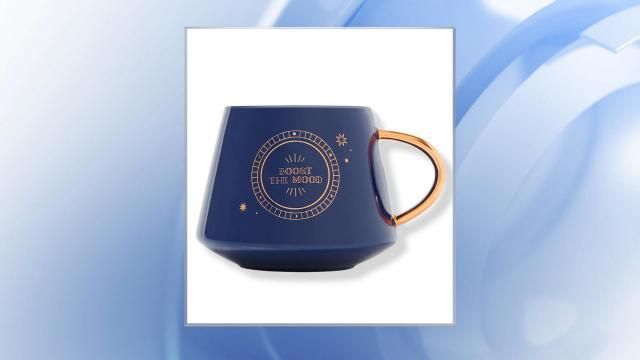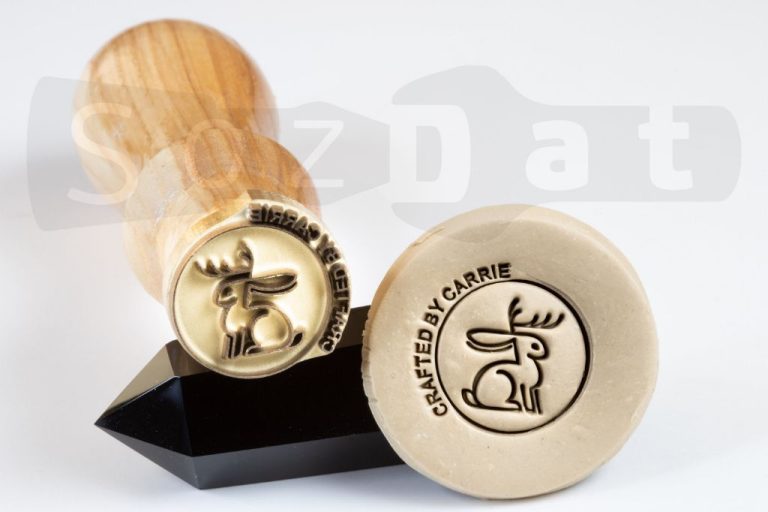Why Are Some Ceramic Mugs Not Microwave Safe?
Ceramic mugs are a staple in many households and offices. They come in a variety of shapes, sizes, colors and designs. Most people use ceramic mugs to drink hot beverages like coffee, tea, and hot chocolate. Many also use ceramic mugs to heat up food and beverages in the microwave.
According to a survey by Good Housekeeping, 63.6% of people use their microwave ovens several times per day, and 98% look for “microwave-safe” labeling when choosing cookware. However, not all ceramic mugs are safe to microwave. Heating them can potentially cause cracks, breaks, and leaks.
Understanding why some ceramic mugs can’t be microwaved requires looking at how microwave ovens work and the properties of ceramic materials. This article will examine the key factors that determine if a mug is microwave-safe.
Microwave Heating Principles
Microwaves heat objects through a process called dielectric heating. Microwaves are a form of electromagnetic radiation with a frequency range between 300 MHz and 300 GHz. When microwaves interact with the polar molecules in an object, the molecules rotate rapidly in an attempt to align with the oscillating electric field. This molecular movement creates friction and heat as the molecules rub against each other 1.
The depth that microwaves can penetrate and heat an object depends on its dielectric properties. Materials like glass, paper and plastic, which have low dielectric loss, allow deep penetration with little heating. Materials with higher dielectric loss like water, ceramics and meat absorb microwaves readily, restricting penetration depth but efficiently converting microwave energy into heat 2.
Metals reflect microwaves and produce sparks rather than heating up. This is why metal containers should not be used in a microwave. Ceramics and glass absorb some microwave energy and heat up, but not nearly as effectively as water-containing foods, making them suitable as microwave-safe cookware 3.
Ceramic Composition
Ceramic mugs are made from clay and then fired at high temperatures in a kiln to harden them. The clay used typically contains ingredients like kaolin, quartz, and feldspar. According to a post on LinkedIn, porcelain mugs tend to contain a higher percentage of kaolin clay, resulting in a finer, thinner, and more delicate material compared to standard ceramic mugs.
The mugs are coated with a liquid glaze containing ingredients like silica, borax, and metal oxides, which melts during firing to create the glossy finish. The final properties of the ceramic depend on factors like the clay composition, firing temperature and glaze ingredients. Firing temperatures of 1200°C or higher create dense, non-porous ceramics with higher mechanical strength.
Porcelain mugs fired at higher temperatures result in a very smooth, glass-like surface that is thinner, lighter, and more translucent than standard ceramic. However, porcelain’s lower silica content makes it less thermal shock resistant. Standard ceramic mugs contain more silica, resulting in a more opaque, sturdier material capable of withstanding rapid temperature changes. But lower firing temperatures leave it more porous and prone to moisture absorption.
Metal Contamination
One common cause of a ceramic mug sparking in the microwave is the presence of trace metals in the clay or glaze used to make the mug. Metals such as iron, cobalt, nickel, and chromium can make their way into ceramic materials during the manufacturing process.

When exposed to microwave radiation, the electric field interacts with these conductive trace metals, causing them to arc or spark. This occurs because the rapidly oscillating electromagnetic field induces electrical currents in the metals, leading to a discharge of energy in the form of sparks.
The sparking and arcing from metal contamination can lead to several problems. The localized heat of the sparks can cause cracks or burning in the ceramic material over time. This can weaken the structural integrity of the mug and cause it to break.[1] In extreme cases, the sparking itself can start a fire within the microwave.
For these reasons, trace amounts of metal contamination in the glaze or clay body should be avoided in microwave-safe ceramics. Mug manufacturers must carefully control their raw materials and production processes to minimize metals that could cause unwanted sparking.
Thermal Stress
One major reason some ceramic mugs are not microwave safe is because of thermal stress caused by uneven heating [1]. When placed in a microwave, the mug itself can heat up much faster than the liquid inside. This uneven heating leads different parts of the mug to expand at different rates.
As some areas of the ceramic expand faster than others, it creates internal stresses. If these stresses become too high, they can cause the mug to crack or even shatter [2]. Thinner mugs are especially prone to thermal shock since they heat faster. The sudden temperature change causes rapid expansion that thinner materials cannot handle.
To avoid potential damage, it’s important to only microwave mugs specially made to withstand large, quick changes in temperature.
Moisture Absorption
One reason some ceramic mugs are not microwave-safe is that unglazed ceramics absorb moisture easily. Ceramic clay contains microscopic pores that can soak up water from the air or liquids inside the mug (Water Physics, 2019). When a wet, unglazed ceramic mug is microwaved, the rapid heating causes the moisture inside the material to quickly convert to steam. This rapid expansion of steam can create internal pressures strong enough to damage the ceramic, causing cracks or even exploding the mug (Johnston, 2015).
Glazed ceramics have a waterproof coating that prevents moisture absorption. However, if the glaze contains imperfections like small cracks or scratches, water can still seep into the porous clay body. Any moisture absorbed into damaged areas of the glaze turns to steam when microwaved, leading to cracks or explosions just like with unglazed ceramics. So mugs with worn glazes may also be unsafe for microwave use (Corning Museum of Glass, n.d.).
References:
Thin Areas
Thin areas on ceramic mugs, such as thin handles and lips, can lead to issues when microwaving. Thin ceramic areas have less material to absorb the microwave energy, which means the energy becomes more concentrated in a smaller spot (https://www.justanswer.com/appliance/hnxow-microwave-sparking-when-put-food-in.html). These hotspots in the ceramic can get extremely hot, rapidly rising above the material’s thermal stress threshold which results in cracks or breaks. Makers glaze ceramic mugs to help distribute microwave energy more evenly, but extremely thin parts like handles and lips may still concentrate too much heat in one spot.
Thin ceramic sections have less material to absorb and dissipate the microwave energy, leading to hotter temperatures which can exceed the thermal stress limits and cause cracks (https://www.quora.com/What-causes-ceramic-plates-to-crack-in-the-microwave). The thin area essentially acts like a hotspot, concentrating the microwaves instead of allowing them to distribute evenly throughout the mug’s material. Lips and handles tend to be the thinnest parts, so they often end up with excessive heat concentration. The resulting thermal stress can quickly lead to cracks, chips, or breaks.
How to Tell if a Mug is Microwave-Safe
There are a few ways to determine if a ceramic mug is safe to use in the microwave:
- Look for the microwave-safe label on the bottom of the mug. This label is usually a symbol with wavy horizontal lines that indicates the material can withstand microwave heating (Source).
- Inspect the mug for any metal decorations, rims, or paint. Metallic materials can spark, arc, or get extremely hot in the microwave, making the mug unsafe (Source).
- Check for cracks, crazing, or any imperfections in the glaze. Cracks or painting over the glaze can allow moisture to penetrate the mug and cause it to crack or explode in the microwave.
- Test the mug by microwaving it with water for a short time (30 seconds) and check if the mug remains cool and undamaged. This allows you to safely determine if it’s microwave-safe.
Taking these precautions can help identify if a ceramic mug can withstand microwave heating before using it to reheat liquids and foods.
Microwave Heating Alternatives
If you have a ceramic mug that is not microwave-safe, there are some alternative heating methods to avoid damaging the mug:
Use a lower microwave power setting. Heating the mug’s contents at 50% or 70% power can help prevent overheating in areas prone to arcing. However, this may result in uneven heating.
Heat water separately, then pour it into the mug. Boiling water in a microwave-safe vessel, then transferring it to the ceramic mug, ensures safe results. Let it stand 1-2 minutes before handling to allow heat to dissipate.
Switch to a microwave-safe mug. Ceramic mugs labeled “microwave-safe” contain no metal and withstand thermal stresses. They will heat contents evenly without risk of damage. Check manufacturer guidelines to verify.
Never microwave a mug with cracks or paint defects. The damaged areas can become hotspots leading to cracks or burns. Heating any ceramic mug comes with some risk, so handle with care.
Conclusion
Ceramic mugs should be used with caution in microwaves. The key takeaways are that ceramics with metal contamination or thin areas can heat unevenly and cause thermal stress, leading to cracks or burning hazards. Moisture absorption can also cause cracks in porous ceramics. Examine your mugs carefully before microwaving, and consider investing in newer mugs labeled as microwave-safe. An interesting tip is to fill your mug with water and microwave it for 30 seconds before adding your beverage – this helps prevent superheating and improves safety.
In closing, ceramic mug safety comes down to awareness and caution. Following the guidance in this article will help ensure your favorite mug survives its microwave adventures. With some basic understanding of microwave heating principles and ceramics, you can continue enjoying your morning coffee or tea with confidence.


